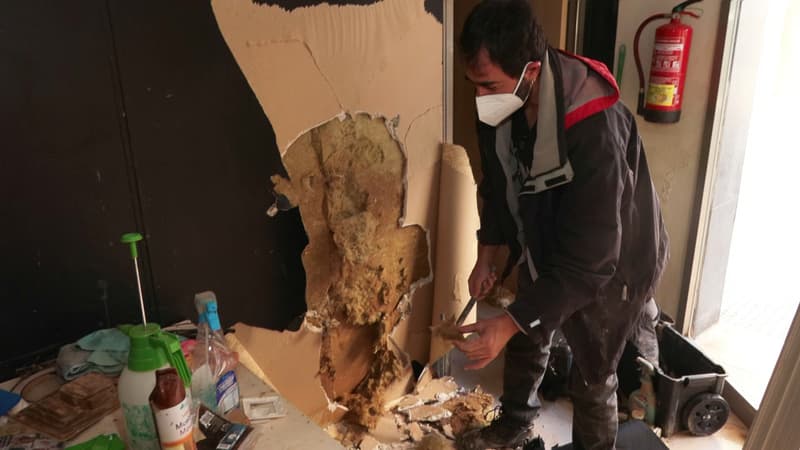“A month later, it’s still wet, full of mud,” Pascual laments in front of a wall soaked in water and falling apart in his tattoo parlor. With his partner Virginia, they had invested their life savings to launch their business in Alfafar, a suburb of Valencia, in Spain.
A few days before its opening, the salon was affected by the deadly floods that devastated the region at the end of October. A month later, the damage is still visible in the cities and the rehabilitation work promises to be titanic.
If the mud is cleaned, everything is destroyed: “We haven’t received the help yet, so no one can go back to work. We are ghost towns, we have to get back up,” shares Virginia.
“We have to get back up”
Same chaos for Pedro, owner of a fruit and vegetable business in Sedaví, still on the outskirts of Valencia. He thought he could resume his activity quickly but the water damaged the entire foundation of his store. “I don’t know when I’m going to resume my activity. My normal life is over. It’s the same for everyone: the bank, the bakery, the cafeteria.”
The material damage is colossal: 22 billion euros in total, especially in public infrastructure. “We are not doing well at all: we cannot work in the town hall, the public lighting is down, the public gardens and parks are destroyed,” lists Juan José Campayo, deputy in charge of urban planning for the Sedavi town hall.
200,000 tons of mud evacuated
Added to this are the 120,000 damaged vehicles that are still in the heart of the cities or the sewers clogged by millions of tons of sludge that will have to be extracted, an operation that promises to be very complex. According to the Valencian Community, since the end of October state and regional services have evacuated nearly 200,000 tons of mud and waste.
The October 29 floods in southeastern Spain left at least 228 dead, 221 of them in the Valencia region.
Source: BFM TV


